Challah
- By Jennifer Segal
- Updated January 21, 2025
- 497 Comments
- Leave a Review
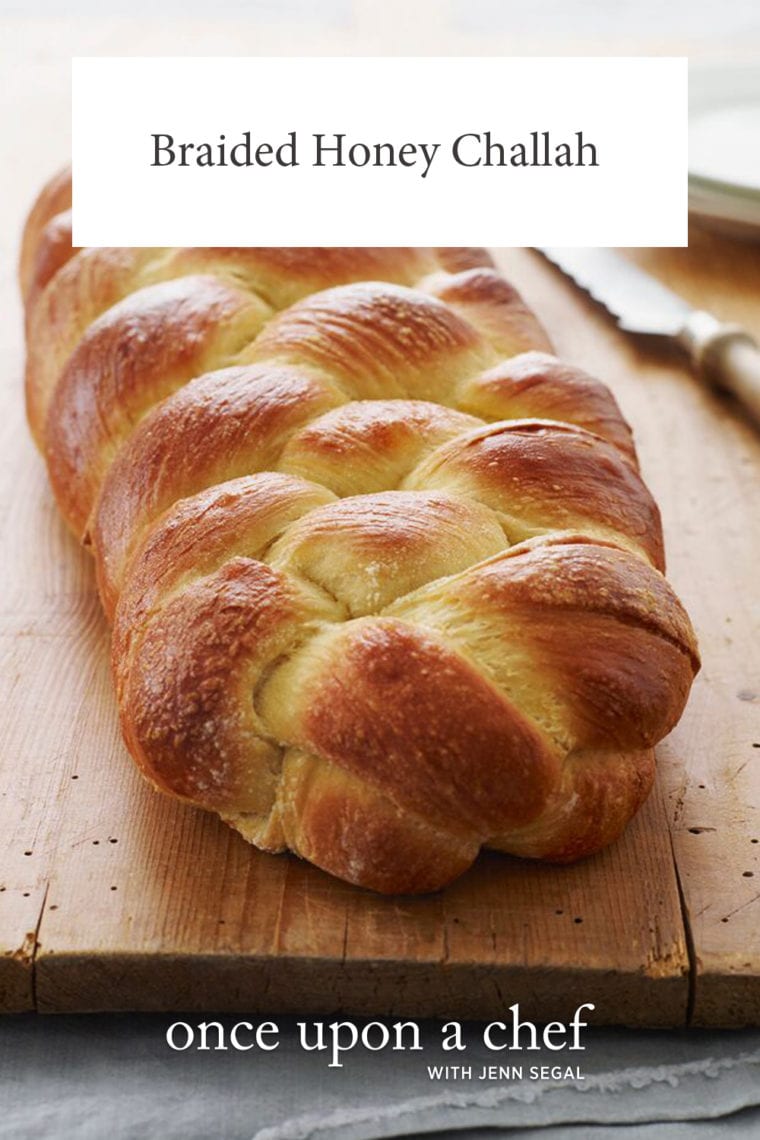
This post may contain affiliate links. Read my full disclosure policy.
Learn how to make the best homemade challah with this easy recipe and step-by-step braiding guide—perfect for Shabbat, holidays, or any occasion!
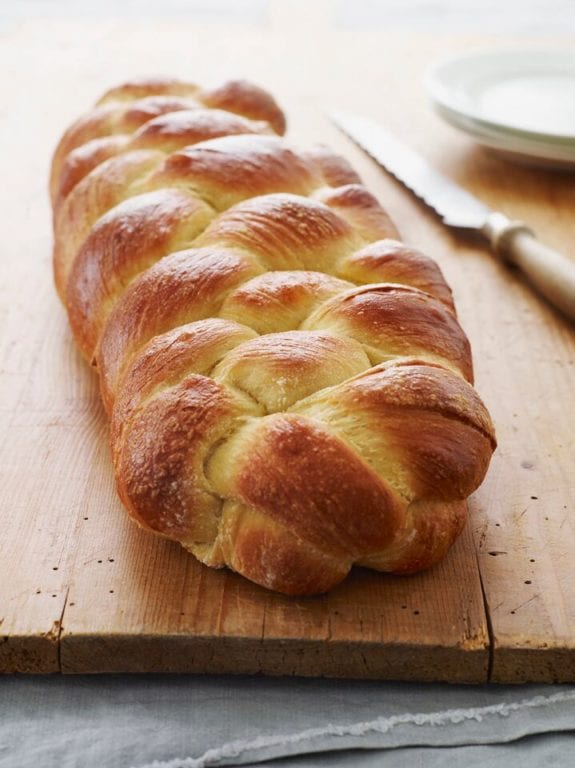
Photo by Alexandra Grablewski (Chronicle Books, 2018)
Challah is the bread of celebration in Jewish tradition, but I put it in the matzo ball soup and bagel category: it appeals to everyone. It’s a rich, slightly sweet loaf with a shiny, golden crust and pillowy-soft interior. But what makes it truly special is its distinctive braid, which symbolizes, among other things, the joining together of family and friends.
Rest assured, challah looks like far more trouble than it actually is. Think of it as a once-in-a-while baking therapy project. Kneading and braiding the dough, smelling the challah baking in the oven—it really is satisfying. And when the long braided loaf is presented at the dinner table, it is a sight to behold!
I owe much of the credit for this recipe to Nanci Hirschorn, one of my lovely readers, who has been perfecting her challah recipe for over thirty-five years. Thank you, Nanci, for all the pointers! Heads up: this recipe makes one 16-in loaf. It’s huge! If you have leftovers, use it to make challah French toast.
What You’ll Need To Make Challah
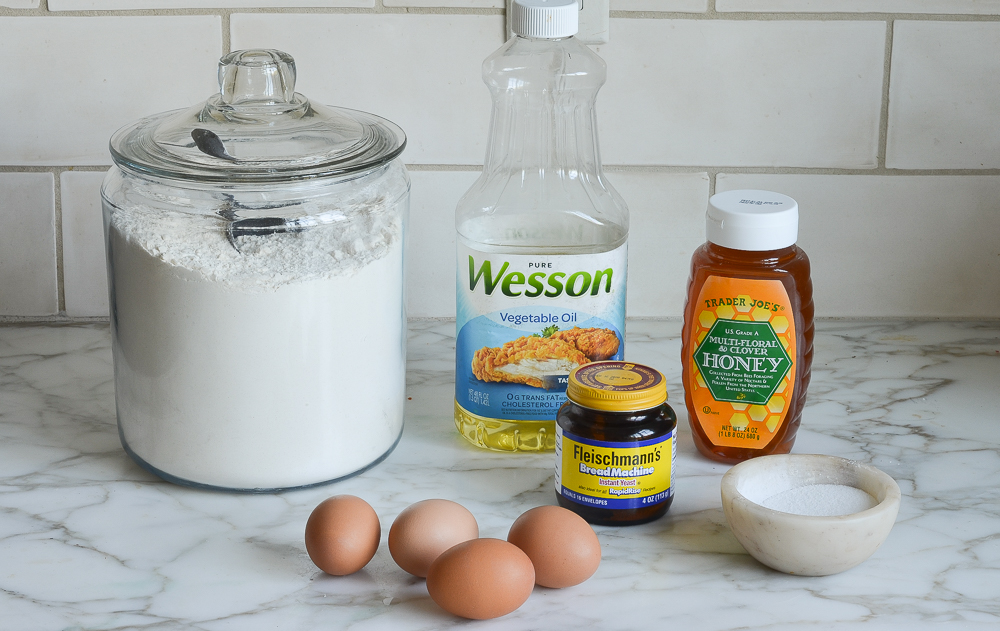
- All-purpose flour: Forms the base of the dough.
- Instant/rapid-rise yeast: Helps the dough rise, giving the bread a light, airy texture—and it works faster than regular active dry yeast. You can find it in jars or packets, but if you’re not a frequent baker, packets are the way to go. Just keep in mind this recipe calls for 1 tablespoon, which is more than a single packet provides.
- Salt: Enhances the flavor
- Lukewarm water: Hydrates the flour, activates the yeast, and helps bind the ingredients together to form the dough.
- Vegetable oil: Adds richness and moisture to the bread, contributing to its soft and tender crumb.
- Honey: Sweetens the dough and adds moisture, while also contributing to the flavor and helping with browning.
- Eggs: Provide richness, moisture, and structure to the dough, giving the challah its characteristic golden color and tender texture. Be sure your eggs are room temperature; this dough is slow to rise and cold eggs will slow it down even further.
- Jump to the printable recipe for precise measurements
Step-by-Step Instructions
Start by whisking together the lukewarm water, oil, honey, two eggs, and the egg yolk until well combined, then set the mixture aside.
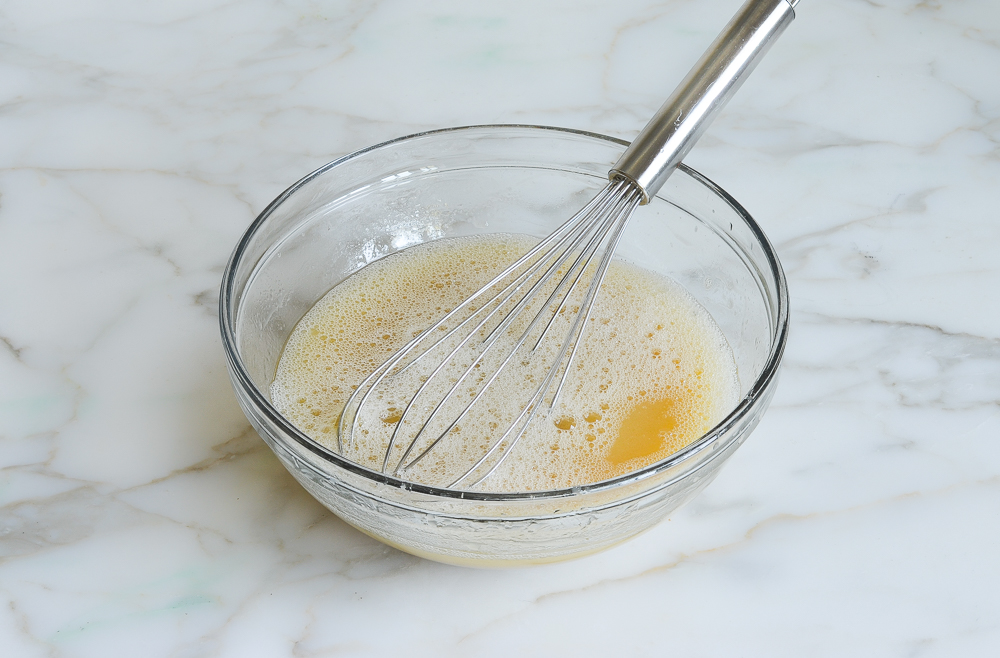
Using a stand mixer with the dough hook attachment, combine the flour, yeast, and salt. Give it a quick mix to evenly distribute the ingredients.
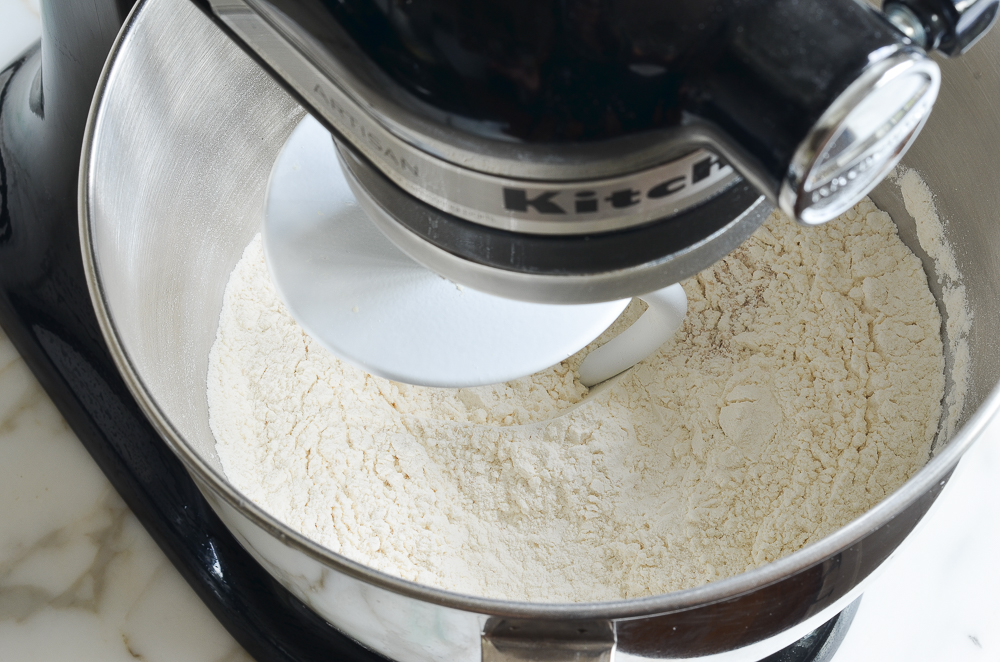
Gradually add the wet ingredients to the dry mixture in the stand mixer. Knead on medium-low speed until the dough becomes sticky and clings to the bottom of the bowl, which should take around 5 to 7 minutes. If the dough seems too wet, don’t worry—it’s meant to be that way.
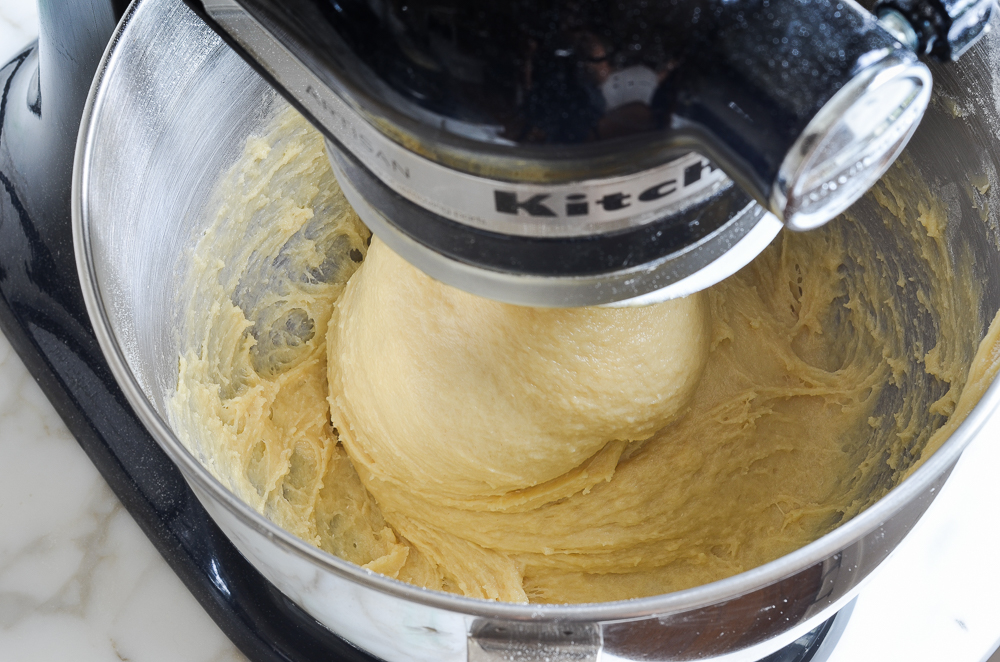
Generously flour your hands before handling the dough, then transfer it to a lightly floured surface. Lightly dust the top with flour and knead until it forms a soft, smooth ball.
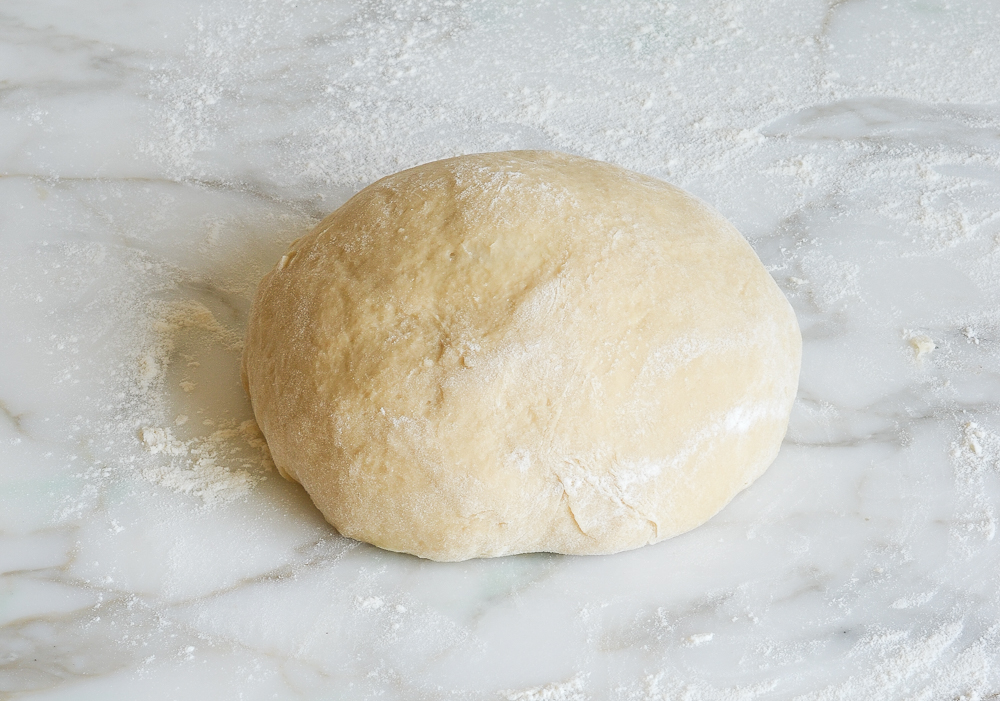
Lightly grease a large bowl with oil or nonstick spray, then place the dough inside and flip it to coat the top. Cover with plastic wrap and let it rise in a warm, draft-free spot until it doubles in size, which may take 2 to 3 hours. Keep in mind that rising times can vary based on kitchen conditions like temperature, humidity, and kneading technique.

To braid the dough, first turn it onto a lightly floured surface, letting it deflate naturally. Lightly dust with flour, then divide it into four equal pieces. If you prefer precision, each piece should weigh around 9 oz (260 g). Braiding challah may seem intimidating, but a simple four-strand braid is both easy and pretty. If you’ve ever braided hair, you’ll have a head start, but even if not, it’s straightforward to learn.
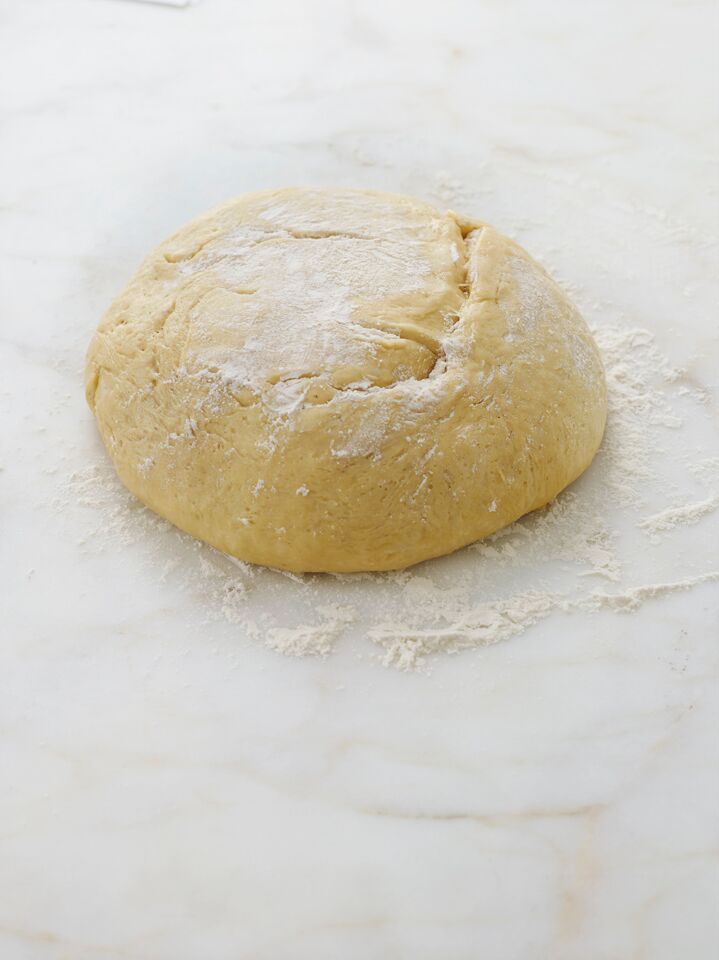
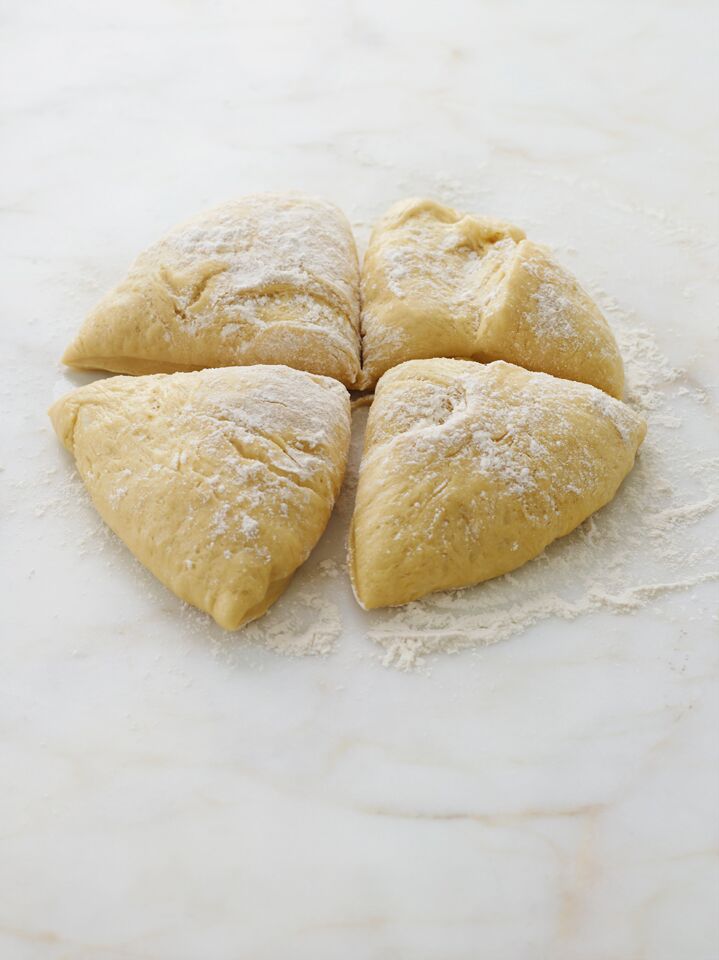
Roll each piece of dough into a 20-inch rope and arrange them vertically in parallel. Pinch the top ends together and fan out the strands. If the ropes shrink, gently stretch them back to length. To start braiding, take the rightmost strand and weave it through the others using an over-under-over pattern. Keep repeating this sequence until the dough is fully braided. Tuck the ends under the loaf to give it a finished look.
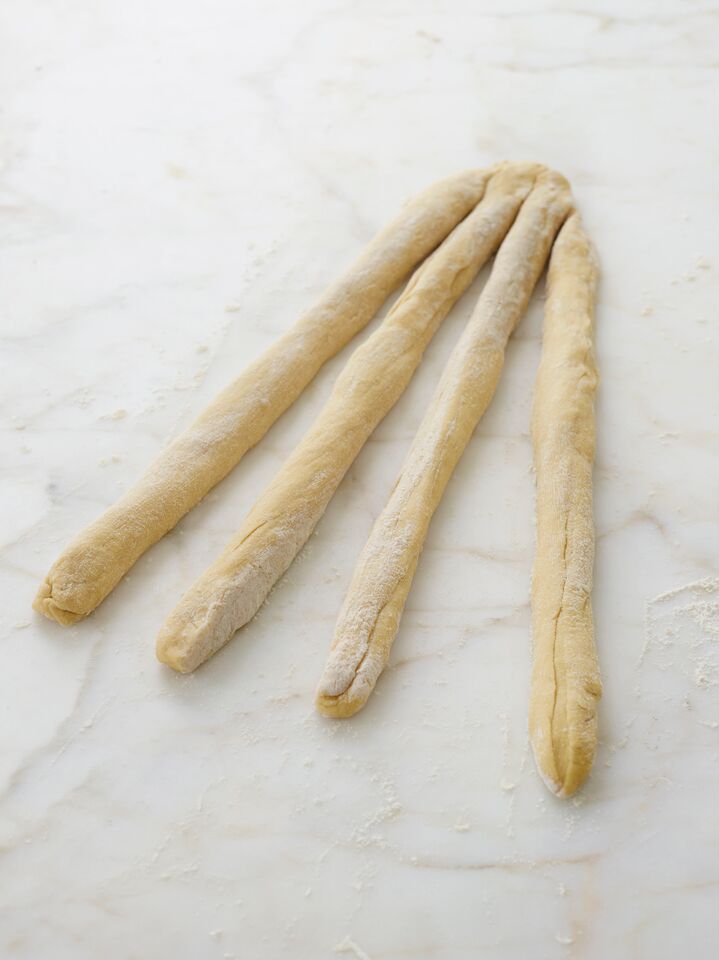
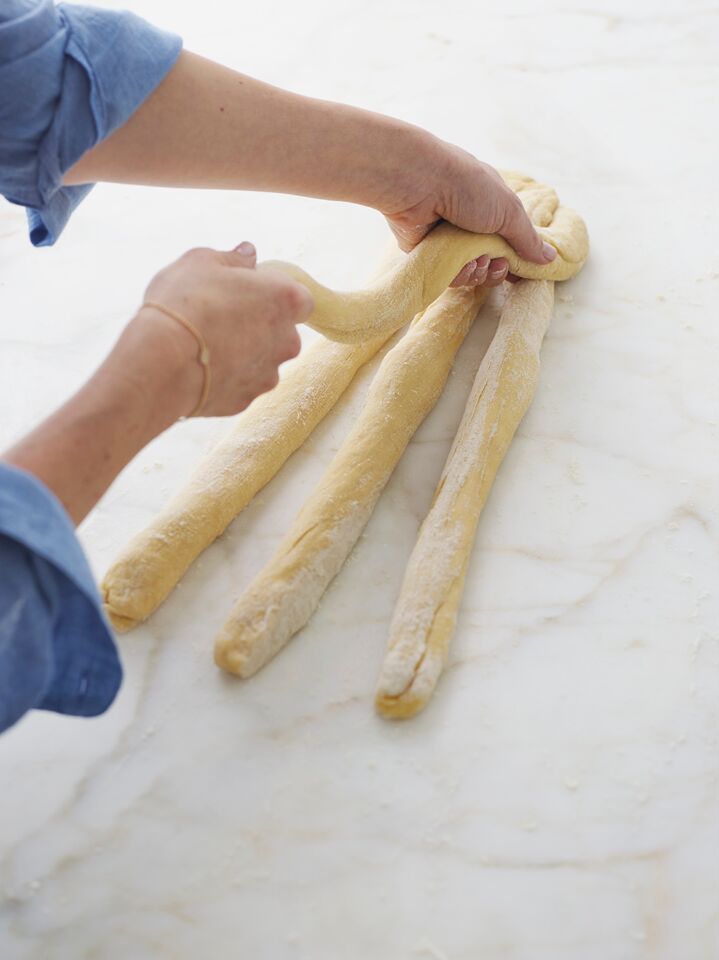
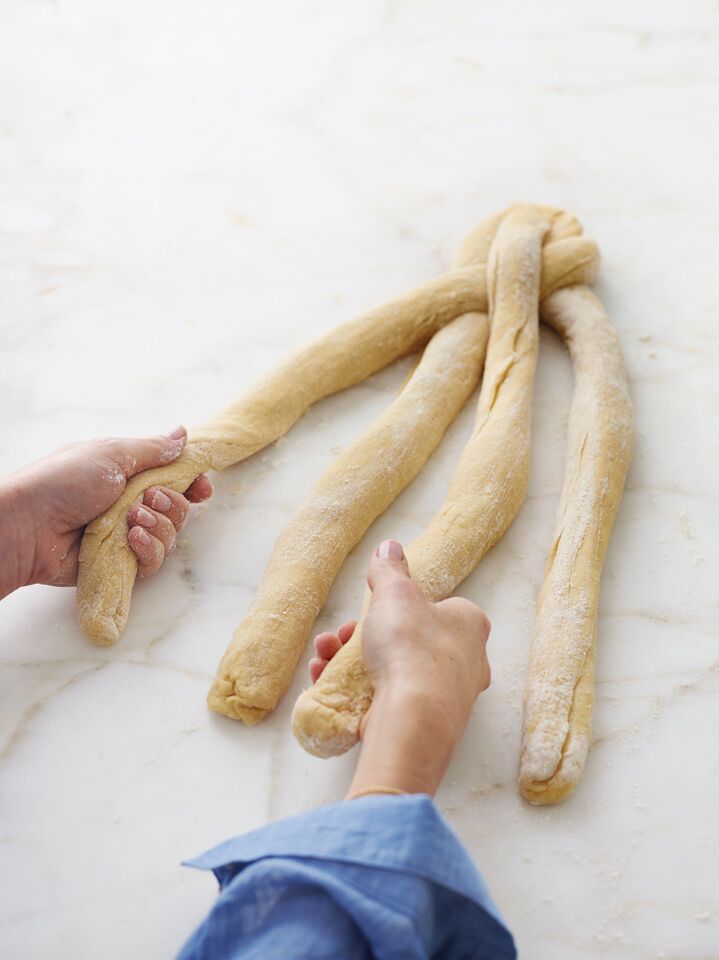
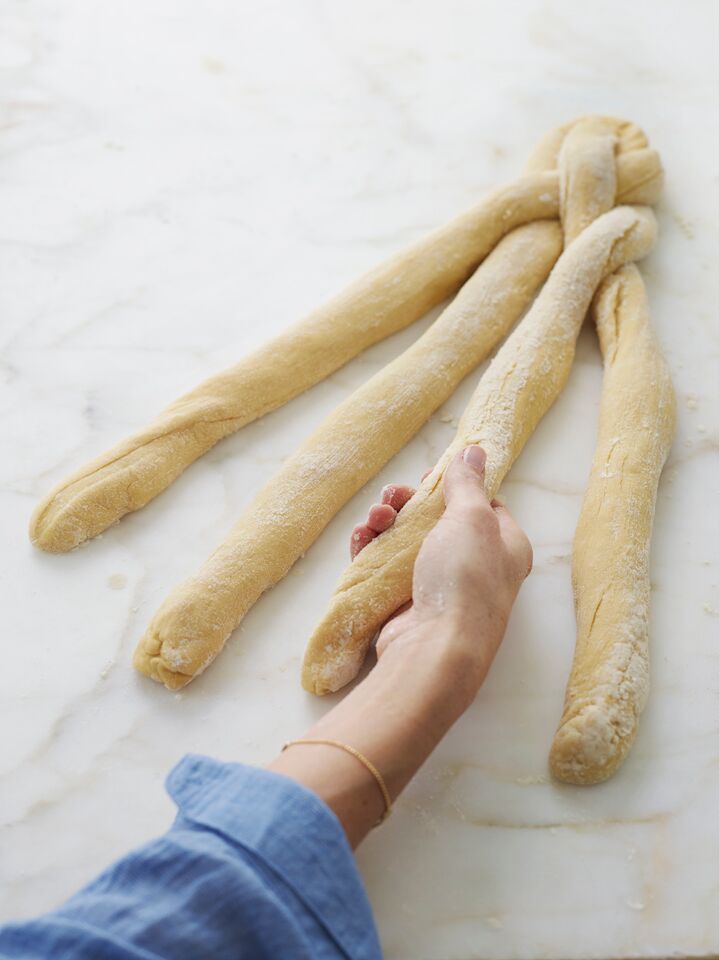
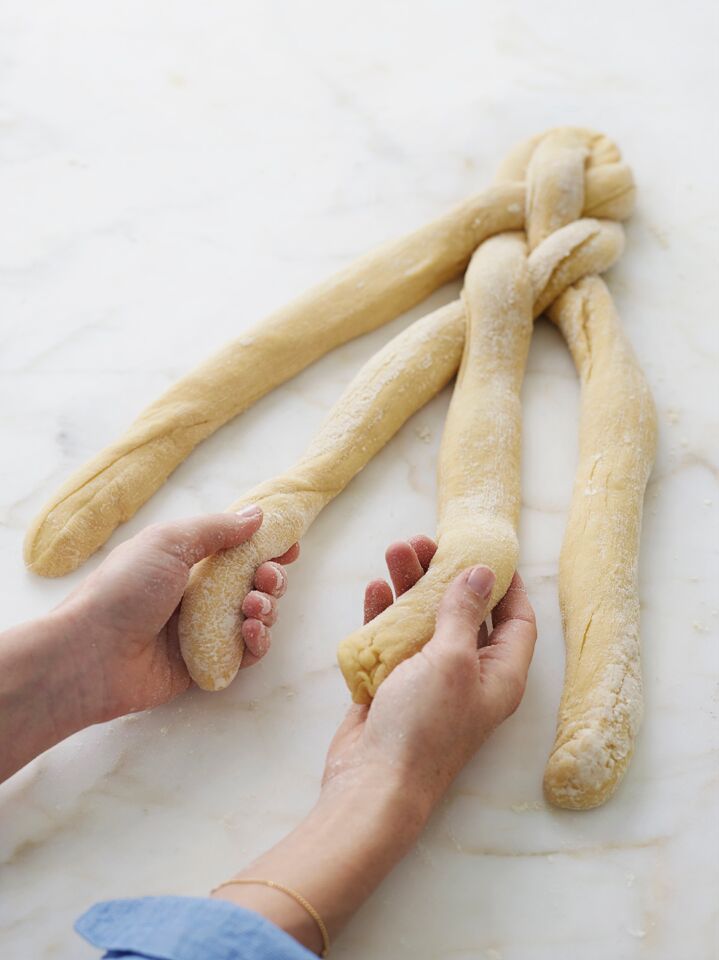
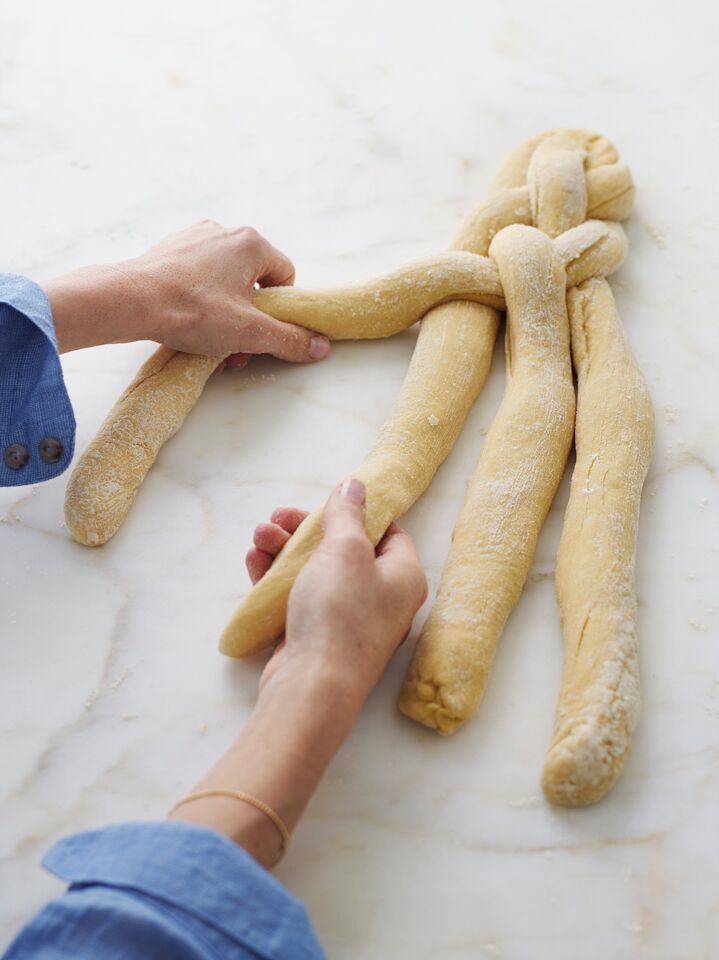
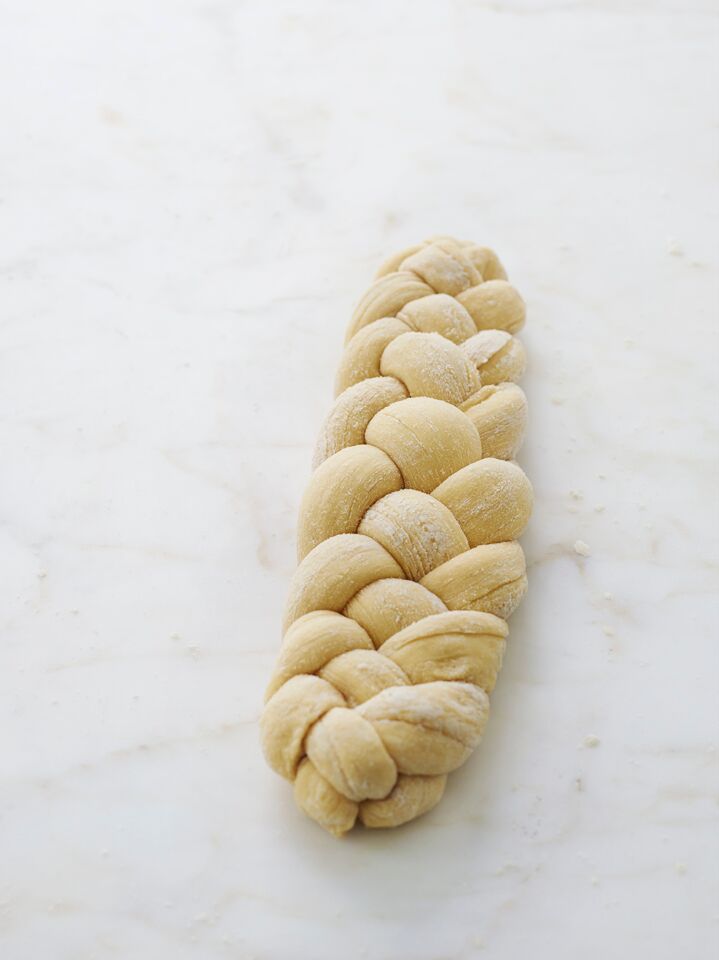
Place the braided loaf on a parchment-lined baking sheet and cover it loosely with plastic wrap. Let it rise in a warm spot until it’s about 1.5 times its size, which takes 1 to 2 hours. Toward the end of the rise, preheat your oven to 350°F with a rack in the middle. The loaf will continue to rise as it bakes. Beat the remaining egg and brush it generously over the dough. If you’d like, sprinkle poppy or sesame seeds before baking.
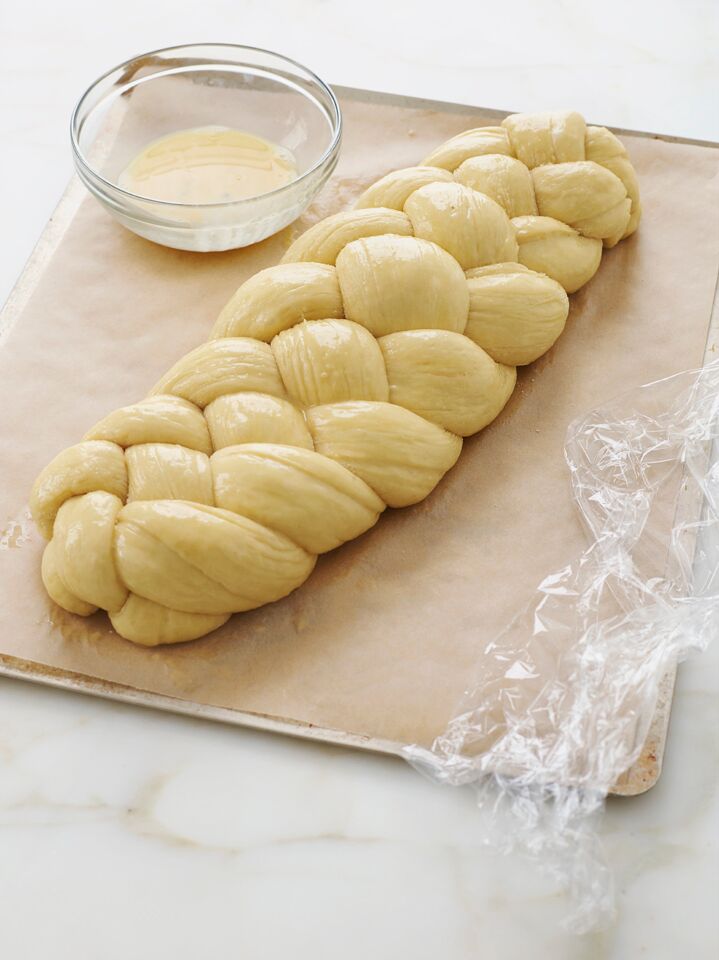
Place the baking sheet on top of another to prevent the bottom from over-browning. Bake for 30 to 35 minutes until the crust is deep golden and the internal temperature reaches 190°F to 200°F. Transfer the bread to a rack to cool. Challah is best enjoyed fresh, but leftovers can be stored in a sealed plastic bag for a few days.
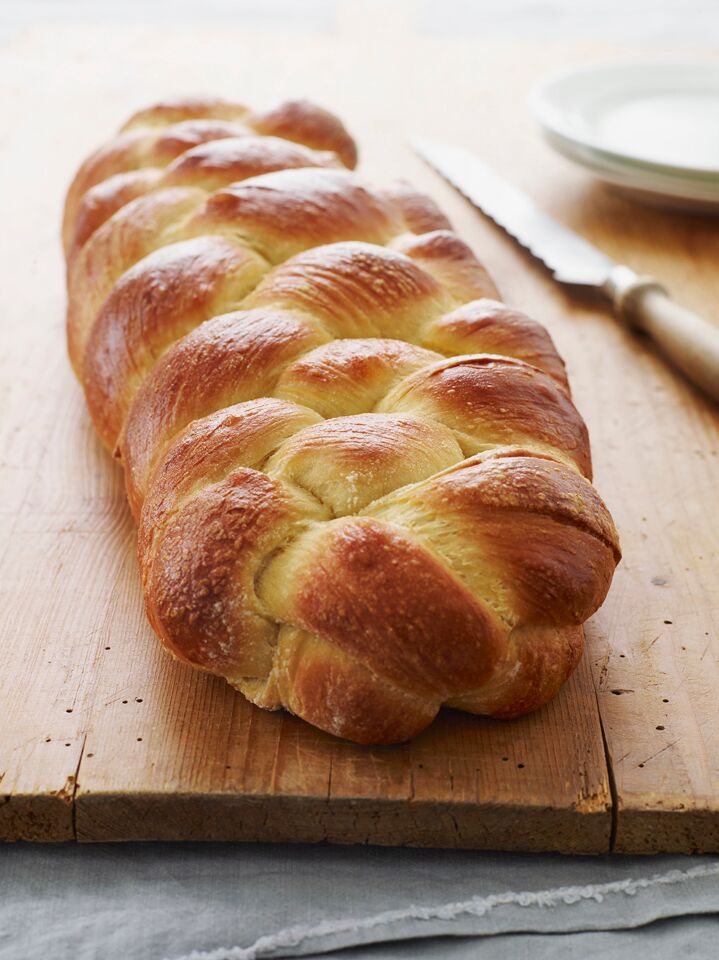
You May Also Like
Homemade Challah

Soft, fluffy, and beautifully braided, this homemade challah is easy to make—perfect for everything from holiday gatherings to everyday meals.
Ingredients
- 4¼ cups all-purpose flour, spooned into measuring cup and leveled-off, plus more for dusting
- 1 tablespoon instant/rapid-rise yeast (see note)
- 2 teaspoons salt
- ¾ cup lukewarm water
- ¼ cup + 2 tablespoons vegetable oil
- ¼ cup + 2 tablespoons honey
- 3 eggs, at room temperature
- 1 egg yolk, at room temperature
Instructions
- In a stand mixer fitted with the dough hook, combine the flour, yeast, and salt. Mix on low speed for 30 seconds to combine. In a separate bowl, combine the lukewarm water, oil, honey, 2 of the eggs, and the egg yolk. Add to the dry ingredients and knead on medium-low speed until you have a sticky dough that clings to the bottom of the bowl, 5 to 7 minutes. The dough may seem too wet but have faith—it’s supposed to be.
- Dust your hands generously with flour, then scrape the sticky, elastic dough out onto a lightly floured work surface. Dust the top of the dough lightly with flour and knead briefly into a soft, smooth ball. Lightly grease a large bowl with oil or nonstick cooking spray. Place the dough in the bowl, flip it over once so the top is lightly oiled, and then cover the bowl with plastic wrap. Allow the dough to rise in a warm, draft-free spot until it's puffy and doubled in size, 2 to 3 hours.
- Invert the dough onto a lightly floured work surface and dust with flour. It will deflate. Cut the dough into four even 9-oz pieces, and then stretch and roll each piece into a rope about 20-inches long. Lay the ropes parallel to one another (vertically). Pinch them tightly together at the top, and then fan them out. If the ropes shrink a bit, just work them back into their original length.
- Begin by taking the strand farthest to the right and weave it toward the left through the other strands using this pattern: over, under, over. Take the strand furthest to the right and repeat the weaving pattern again: over, under, over. Repeat this pattern, always starting with the strand farthest to the right, until the whole loaf is braided. Tuck the ends under to give the loaf a finished look.
- Carefully transfer the braided loaf to a parchment-lined 13 x 18-inch baking sheet. Cover the loaf loosely with plastic wrap and let it rise in a warm, draft-free spot until about 1.5 times the size, 1 to 2 hours. Toward the end of the rising time, preheat the oven to 350°F and set an oven rack in the middle position. (Note that the loaf will continue to rise significantly in the oven.)
- In a small bowl, beat the remaining egg and brush the beaten egg generously over the risen dough. (Note: If you like, sprinkle poppy or sesame seeds onto the challah before putting it in the oven.) Place the baking sheet atop another baking sheet; this will prevent the bottom crust from browning too much. Bake for 25 to 35 minutes, until the crust is a rich brown color and the internal temperature is between 190°F and 200°F on an instant-read thermometer. Remove the bread from the oven and place it on a rack to cool. Challah is best enjoyed fresh, but leftovers will keep for a few days in a sealed plastic bag.
- Note: Active dry yeast may be used instead of instant/rapid-rise yeast, however, the dough will take longer to rise. If you're using yeast that comes in the packets, the quantity required for this recipe (1 tablespoon) is more than one packet. When baking yeast breads, rising times are only a guide; the temperature in your kitchen, the humidity level outdoors, and how you knead the dough will all affect the rising time.
- Make-Ahead Instructions: Prepare the loaf up to the point where it's braided and on the pan. Cover it with greased plastic wrap, and place it in the refrigerator overnight. The next day, remove the braided dough from the refrigerator and set it on the countertop (keep it covered). Let it come to room temperature and rise for about 1 hour before baking as directed.
- Freezer-Friendly Instructions: Challah can be baked, cooled, tightly wrapped, and frozen for up to 3 months. Allow it to thaw at room temperature for at least 3 hours before serving.
Nutrition Information
Powered by ![]()
- Per serving (16 servings)
- Serving size: 1 slice
- Calories: 206
- Fat: 7 g
- Saturated fat: 1 g
- Carbohydrates: 32 g
- Sugar: 7 g
- Fiber: 1 g
- Protein: 5 g
- Sodium: 126 mg
- Cholesterol: 35 mg
This website is written and produced for informational purposes only. I am not a certified nutritionist and the nutritional data on this site has not been evaluated or approved by a nutritionist or the Food and Drug Administration. Nutritional information is offered as a courtesy and should not be construed as a guarantee. The data is calculated through an online nutritional calculator, Edamam.com. Although I do my best to provide accurate nutritional information, these figures should be considered estimates only. Varying factors such as product types or brands purchased, natural fluctuations in fresh produce, and the way ingredients are processed change the effective nutritional information in any given recipe. Furthermore, different online calculators provide different results depending on their own nutrition fact sources and algorithms. To obtain the most accurate nutritional information in a given recipe, you should calculate the nutritional information with the actual ingredients used in your recipe, using your preferred nutrition calculator.
See more recipes:
Comments
Add a Comment Cancel reply
This site uses Akismet to reduce spam. Learn how your comment data is processed.

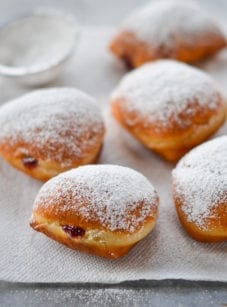
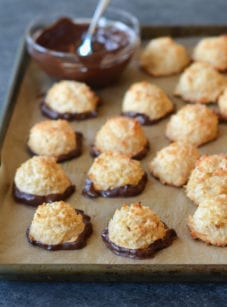
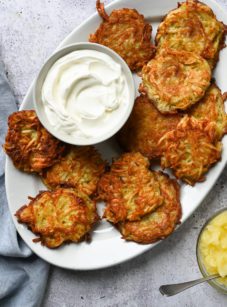
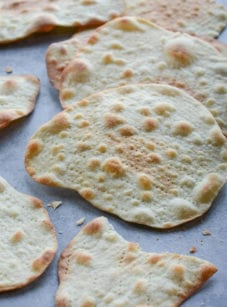
Made your challah today Came out delicious but I noticed it came out a bit heavy, my dough wasn’t soft to begin it ,I feel like it was more of a medium dough & wasn’t sticky. Could the amount of water be the problem? Maybe I needed more than 3/4 cup of water?
Hi Nell, There’s always some variation with bread doughs — the brand of flour (I use King Arthur), how you measure, etc. can all make a big difference. Next time, I would try adding a bit more water or a bit less flour to get that sticky dough. Hope that helps!
This is the best challah recipe I ever tried! It turned out better than any challah I’ve bought or made ever! Thank you!!!
The recipe worked beautifully. Absolutely perfect. My only question is about the honey. I found the flavor overpowering. Can you substitute agave? I have read that agave is sweeter so you need to use less. Thoughts?
Hi Leslie, I don’t have any experience with agave so it’s hard to say, but I think it’d probably work. You could also use sugar. If you try the agave, I’d love to hear how it turns out!
This was my first time making the challah. The outside looks perfect but the inside is still raw 😢 any suggestions?
Sorry you had a problem with this, Amanda! Did you make any adjustments to the recipe? Did you check the internal temperature to make sure it was between 190°F and 200°F on an instant-read thermometer before removing it from the oven?
No adjustments. It might have been my oven. I’m going to try again! Can you suggest an instant-read thermometer?
Hi Amanda, I have one from Williams Sonoma. Hope you have better luck next time around!
My. Challah came out nice. I didn’t taste it yet. My question is why did it seem to spread out and not high? Thanks.
Hi Susan, Happy to help troubleshoot. Can you send me a photo at jennifer@onceuponachef.com?
Can I substitute silan for the honey? I have a child under 1. Thanks!
Hi Hannah, I wasn’t familiar with silan (I just Googled it and read about it). It sounds like it would work as a substitute for the honey, but I can’t guarantee it as I haven’t tried it myself. Please LMK how it turns out if you try it!
This bread made up easily and looked wonderful with the four strand braid which was easy to do. If you’re not using King Arthur flour I’d suggest being cautious–I used the amount given in the recipe and the bread was a bit tough as it was too much for the amount of liquid. Next time I’ll start with 3 1/2 cups and add more flour as needed. I plan to add some grated lemon or orange zest for a bit more complexity and perhaps some stronger flavoured honey. I needed a much longer initial rise and about half an hour longer than suggested on the second rise. All that being said, it is a good bread.
Hi Jenn-I purchased your book and have followed your recipes for quite a while. EVERYTHING is always delcious! A couple of weeks ago my husband and I made Challah following your recipe. It was absolutely delicious, however, was very heavy. Almost a cake-like consistency.
Any idea as to why the bread was not lighter as a Challah should be?
Thanks so much for your reply!
While challah is soft, I wouldn’t describe it as light, so I suspect you didn’t do anything wrong. (And so glad you like the recipes!) ❤️
This is hands down the best bread I ever baked! It smells so good in my kitchen right now, only issue is I might eat it all in a day 🤷🏾♀️
Thank you so much for taking the time to share this.
I used Italian 00 flour and olive oil (pantry supplies found during this madness)~ the bread turned out perfectly! Did I mention my numerous yeast breads fails in the past? And that this was my first attempt at Challah? As always, your recipes are perfection. Thank you Jenn!
This was my first challah and it was perfect! I followed the directions and (like everything else I’ve ever made from you Jen) it turned out looking just like the picture and tasting as good as anything I have purchased at a bakery. Since I am cooking for just my husband and I these days we will have plenty left over for some of your amazing challah-based recipes. Thank you so much!